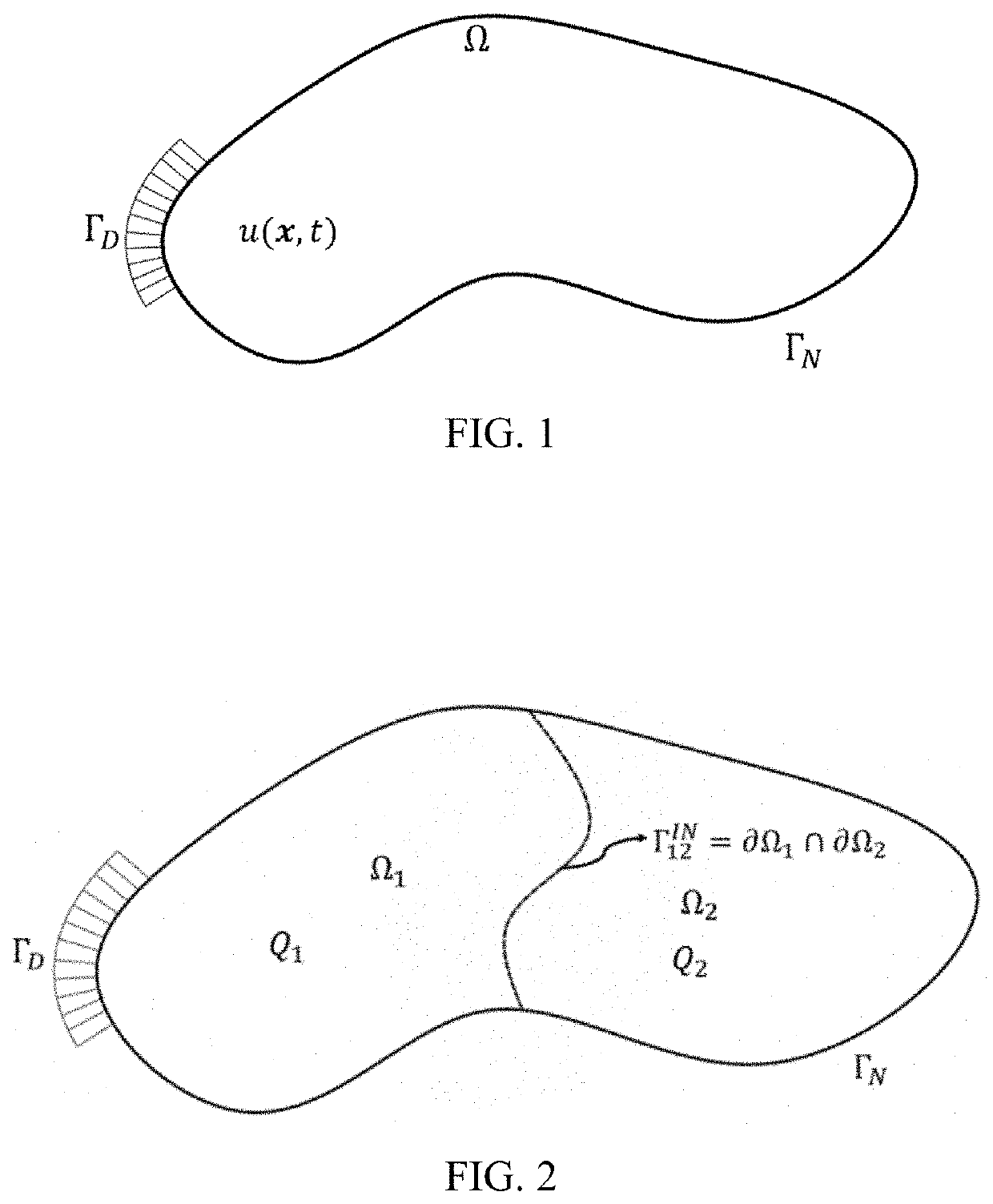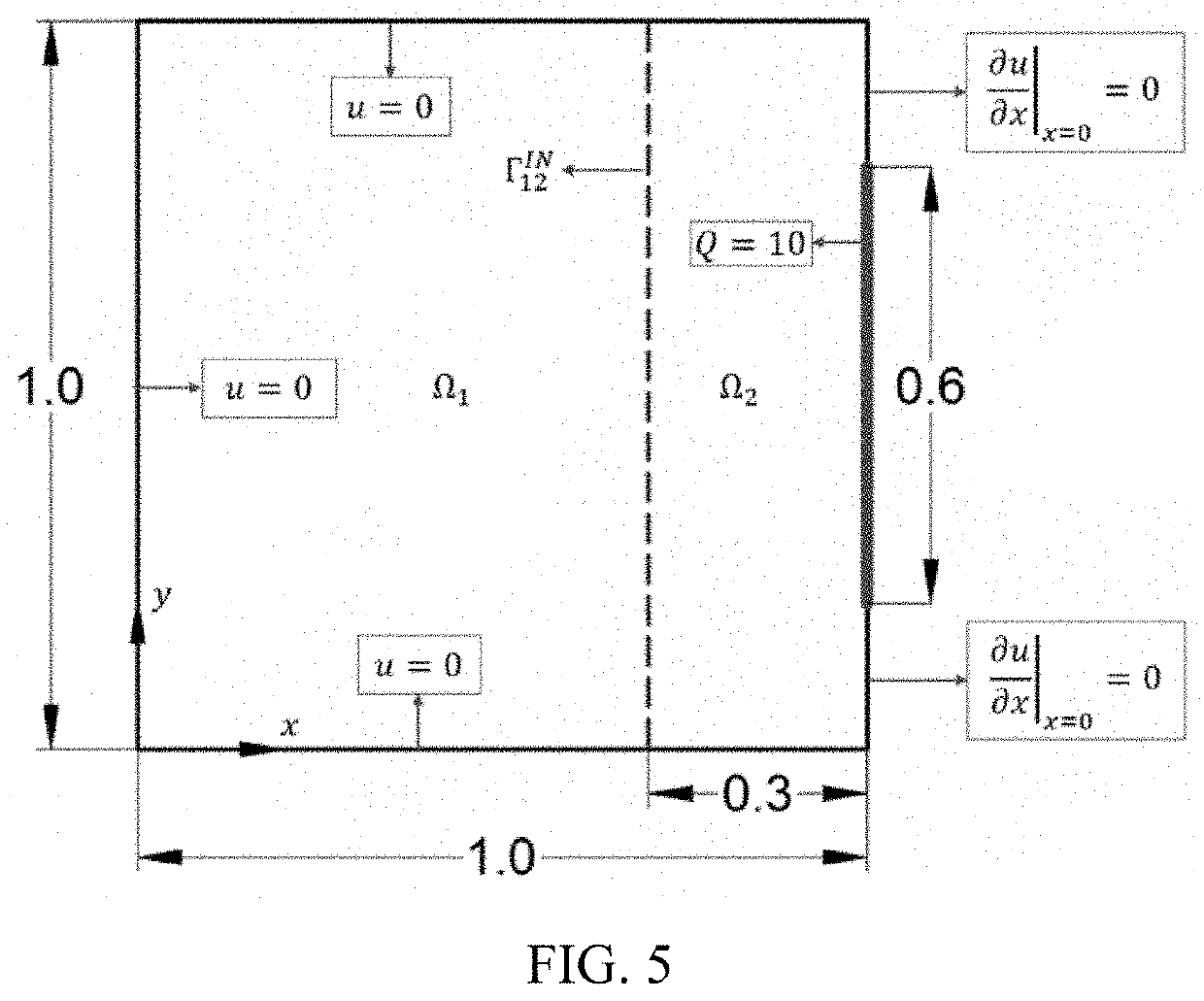Multi-time stepping integration method with dirichlet-robin interface coupling and applications of same
a technology of dirichlet-robin interface coupling and multi-time stepping integration, applied in the field of material science, can solve the problems of high computational cost of such a process, undesirable build failure, and accumulation of residual stress, and achieve the effect of robust and stabl
- Summary
- Abstract
- Description
- Claims
- Application Information
AI Technical Summary
Benefits of technology
Problems solved by technology
Method used
Image
Examples
example
An Optimal Multi-Time Stepping Method for Transient Heat Conduction Simulation for Additive Manufacturing
[0157]One of the objectives of this exemplary study is to develop an efficient multi-time stepping methodology for transient heat conduction problem in order to accelerate the simulation with desirable accuracy at the small region of interest. In this example, the work of Roux et al. is extended to a time-dependent problem, such as transient heat transfer. Specifically, to achieve stable coupling and accelerate the convergence of Dirichlet-Robin iteration methods, a systematic method is developed to obtain the augmented Robin term based on the derivation from 1D problem.
[0158]The augmented Robin term is a function of time step, relative material properties and spatial mesh size, and is close to an optimal value. Based on this, an approximated augmented matrix to the Schur complement matrix is developed and substituted into the Dirichlet-Robin iteration method. This significantly ...
PUM
 Login to View More
Login to View More Abstract
Description
Claims
Application Information
 Login to View More
Login to View More - R&D
- Intellectual Property
- Life Sciences
- Materials
- Tech Scout
- Unparalleled Data Quality
- Higher Quality Content
- 60% Fewer Hallucinations
Browse by: Latest US Patents, China's latest patents, Technical Efficacy Thesaurus, Application Domain, Technology Topic, Popular Technical Reports.
© 2025 PatSnap. All rights reserved.Legal|Privacy policy|Modern Slavery Act Transparency Statement|Sitemap|About US| Contact US: help@patsnap.com



